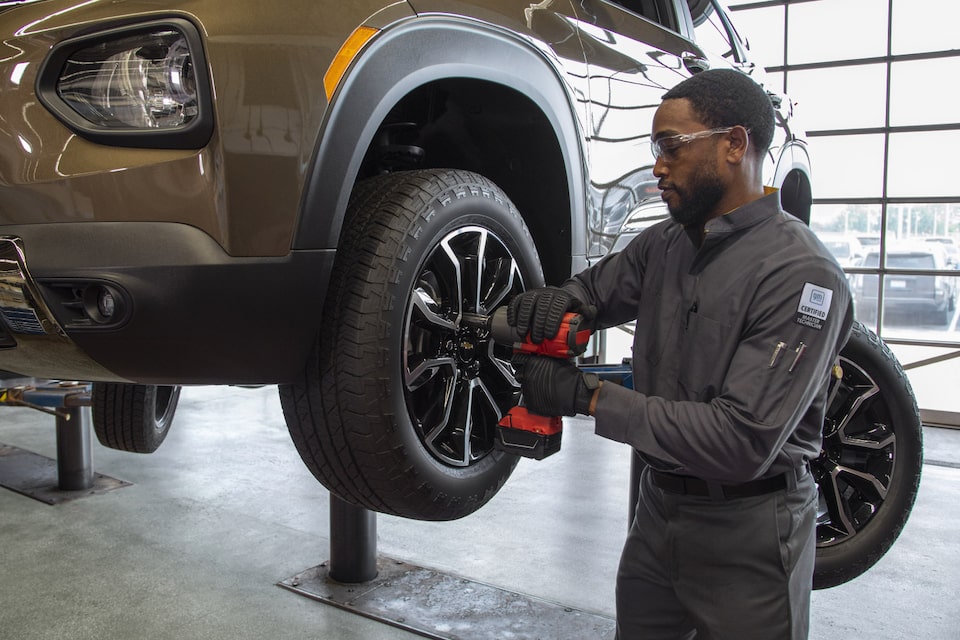Tire Service: The Impact of Climate Condition
When it involves making certain ideal efficiency and safety and security when traveling, comprehending the impact of weather problems on tire solution is critical. From scorching heat to icy roadways, each climate aspect can dramatically influence tire capability and general driving experience. By diving right into the impacts of varying climate condition on tires, vehicle drivers can acquire useful insights that might enhance their lorry's efficiency and durability. In this discussion, we will discover the complex relationship between weather condition problems and tire service, clarifying the significance of weather-specific tire maintenance methods and considerations.
Warmth and Tire Efficiency
When subjected to high temperatures, tires experience modifications in efficiency that can substantially affect automobile safety and security and handling. The heat generated from prolonged driving or hot weather problems triggers the tire rubber to soften, leading to minimized walk life and boosted wear.
Furthermore, high temperatures can accelerate the process of tire aging, causing the rubber to deteriorate a lot more quickly. To minimize the results of warm on tire performance, chauffeurs should routinely examine their tire stress, rotate tires to make certain even put on, and examine for any kind of indicators of damage.
Cold Weather Results
Cold weather condition problems can have a substantial effect on tire efficiency and safety. As temperature levels drop, tire rubber can solidify, leading to lowered traction on icy or snow-covered roads. In cold weather, tires may additionally shed air pressure extra quickly, which can influence managing and gas effectiveness. Furthermore, chilly temperatures can trigger tire sidewalls to tense, increasing the danger of damage from gaps or other road risks.
To mitigate the effects of winter on tires, it is important to routinely check tire pressure and inflate them to the maker's advised degrees. Making use of winter season or all-season tires developed for chilly weather conditions can also boost grip and hold on icy or snowy roadways - mopar tire service specials. Appropriate tire maintenance, including routine evaluations for wear and damages, ends up being a lot more critical during colder months to ensure ideal efficiency and safety and security
Rainy Conditions Influence
Throughout wet problems, tire efficiency and safety can be dramatically influenced by the damp roadway surface areas and reduced visibility. The tread pattern of tires plays a crucial role in keeping traction on wet roadways. Tires with worn-out footsteps are extra prone to hydroplaning, where a layer of water accumulates in between the tire and the road surface, causing loss of grip. To combat this, chauffeurs should on a regular basis examine their tires for adequate tread depth and think about spending in tires especially designed for damp conditions.

Snow and Tire Safety
Snow-covered roadways pose unique obstacles for vehicle drivers, stressing the importance of correct tire choice and maintenance. When driving in snowy conditions, having the right tires can make a significant difference in safety and performance. Winter season tires are developed with unique rubber substances and tread patterns to supply far better traction on snow and ice contrasted to all-season tires. The much deeper footsteps and sipes of winter tires aid hold the road much better, minimizing the danger of moving and slipping.
Along with utilizing winter tires, it is critical to guarantee they are correctly blown up. Winter can trigger tire visit our website stress to go down, impacting grip and handling (morris tire and alignment). Routinely examining and maintaining the proper tire stress is necessary for ideal efficiency in snowy conditions

Weather-Related Tire Upkeep
When confronted with different weather, proper tire upkeep comes to be an important element of car safety and performance. Weather-related tire maintenance incorporates a variety of methods targeted at making sure ideal tire feature and longevity in various weather condition situations. One crucial element of weather-related tire maintenance is tire stress law. Fluctuating temperatures can cause tire pressure to vary, impacting traction and gas performance. Frequently checking and adjusting tire stress according to maker navigate here suggestions is necessary for risk-free driving in changing weather. In addition, tire tread deepness plays a significant function in taking care of different weather aspects. Tires with adequate step depth give much better hold on wet or icy roadways, decreasing the threat of skidding or hydroplaning. Checking tire step routinely and replacing tires when step wear reaches a specific deepness is vital for preserving grip and security in adverse weather condition. By prioritizing weather-related tire upkeep, vehicle drivers can boost safety, enhance lorry efficiency, and prolong the life-span of their tires.
Conclusion
In conclusion, weather condition conditions have a significant impact on tire performance and safety. From heat affecting tire pressure and put on to winter lowering traction, it is necessary to take home into consideration the climate when keeping and making use of tires. Stormy conditions can lower grasp and cause hydroplaning, while snow can raise the threat of mishaps if tires are not appropriately geared up. Weather-related tire upkeep is vital in ensuring optimal efficiency and safety on the roads.
In this conversation, we will certainly explore the complex connection in between climate conditions and tire service, shedding light on the significance of weather-specific tire upkeep techniques and factors to consider.
